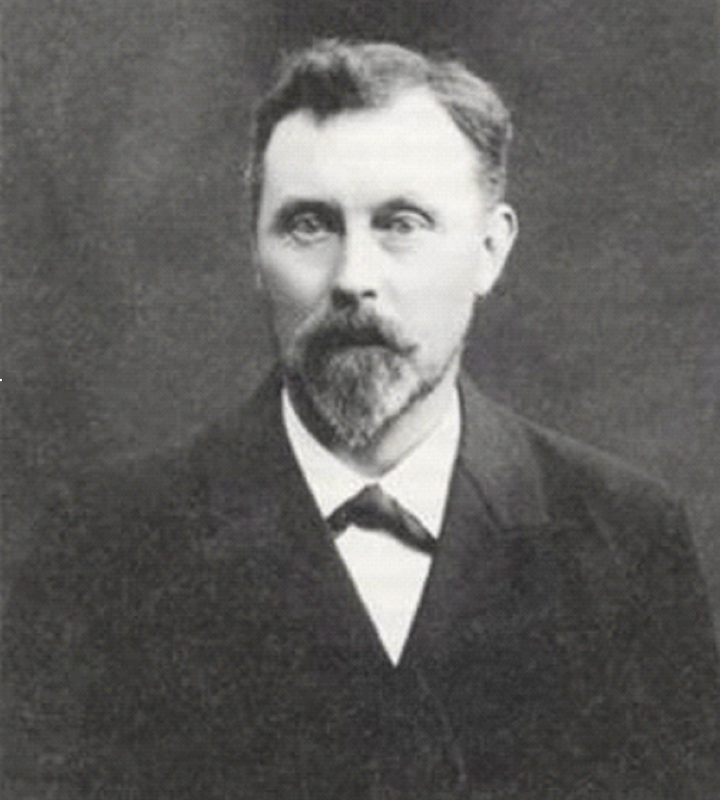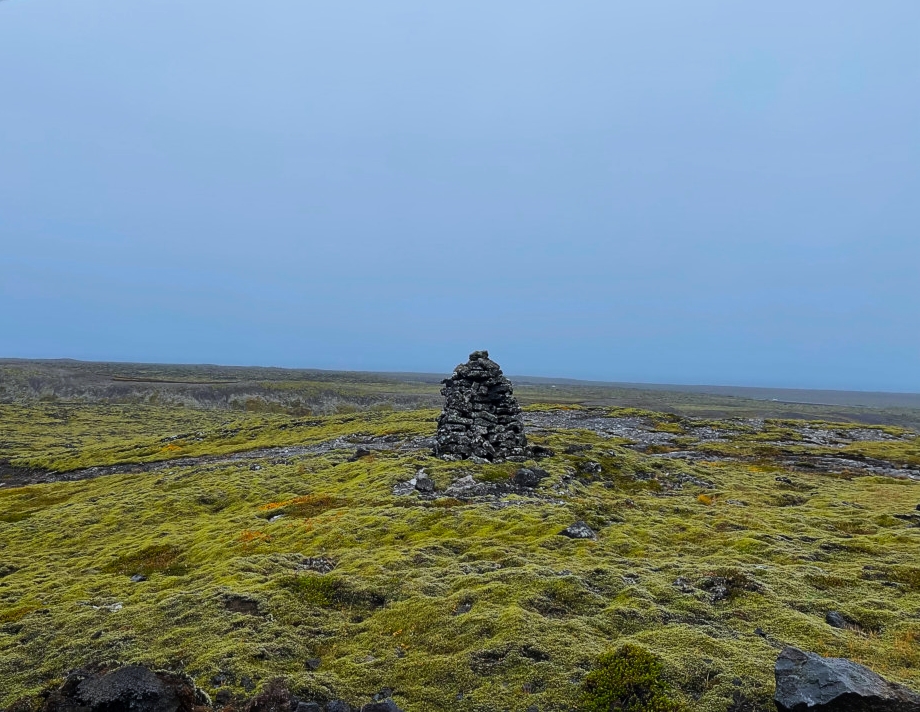Einar Kvaran was born on the ancient parish, Vallanes. Both his father and grandfather were priests and hoped that one day mom’s favorite boy would walk in their footsteps. It was normal to receive elementary education at home and with a priest as a father, religion weighed heavy on the curriculum. Needless to say, Einar became very familiar with the Bible and its teachings.
Not like his father


In the Before photo the old church during Einar’s time is on the left. The new one on the right was built in 1930.
Being a deep thinker by nature, the gospel echoed continuously in the young man’s mind. Einar struggled to accept all its teachings and even more, it lacked the guidance he was looking for. That being the case, he started looking into other ways to understand the afterlife. As a consequence, he realized early on that becoming a priest was never going to happen. Nonetheless, he wanted an education and to make something of himself.
Finally, when Einar came of age he moved to Reykjavík to continue his education at the Learned School. During his time at the school he realized his talent and passion for writing. So much that he wrote countless poems and stories. Then, in the spring of 1881 Einar graduated and by fall he had moved to Denmark to study Economics at the University of Copenhagen. His heart was not in it and the young man spent his time reading and socializing with the other Icelandic students.
Going to College
University of Copenhagen, Denmark
Being active in social activities was more important than studying Economics. Nevertheless, college wasn’t a complete waste of time. Einar and four other Icelanders started their own paper which they called Verðandi. One of the paper’s cofounders was to become the future Minister of State, Hannes Hafstein. The two lads remained friends into adulthood.
In 1885, while still in Denmark, Einar met and fell in love with the Danish Maren Mathilde Petersen (1861-1887) and before long (1885) they were engaged. The free-spirited Icelander supported religious freedom and didn’t agree with the teachings of the Danish churches. Therefore, he wasn’t about to take vows in a church he didn’t believe in. Instead, the couple opted for a civil wedding. Not only did Einar disagree with the Danish churches but also publicly spoke about how Iceland lacked religious freedom as well.
A new life
In 1885, while still in Denmark, Einar met and fell in love with the Danish Maren Mathilde Petersen (1861-1887) and before long (1885) they were engaged. The free-spirited Icelander supported religious freedom and didn’t agree with the teachings of the Danish churches. Therefore, he wasn’t about to take vows in a church he didn’t believe in. Instead, the couple opted for a civil wedding. Not only did Einar disagree with the Danish churches but also publicly spoke about how Iceland lacked religious freedom as well.
Einar’s school grant ran dry and since he had failed to get his degree, he didn’t have a job waiting for him back in Iceland. With nothing holding them back, the newlyweds leaped into the unknown and headed to the Americas. Their first stop was Minneapolis, U.S.A. where they stayed a couple of months with the Norwegian priest and poet Kristian Jansen. From there they continued on to the Icelandic community in Winnipeg, Canada.
The young coupled struggled to find work and as a result, they barely made ends meet. It didn’t help that Einar failed to graduate from the University. With this in mind, he turned to what he did best, writing and speaking. The young talent held lectures and helped organize a theatre community. It didn’t take the community long to recognize his contributions and before soon enough, his name became commonplace. Einar’s ambitions didn’t end there. The poetic and passionate young Icelander became a journalist and an editor for the local newspaper.
Ambition saves the day
With great ambition and love for writing, the editor soon found himself not just writing, but also directing and acting in plays. As ambitious as he was, Einar also co-founded two Icelandic newspapers called Heimskringla (Globe) and Lögberg (Tribune). However, due to disagreements, Einar lasted a little over two months with Heimskringla.
Tragedy strikes

The same year, in the summer of 1886, Maren gave birth to their first child, a boy. Sadly, only a year later, in the summer of 1887, their young son became sick and passed away. When he died, Maren was already several months pregnant with their second child, Matthías. Because of this, the birth of Matthías was bitter sweet. What is more, after giving birth Maren contracted Scarlet Fever and passed away five days later.
After Maren’s death, a friend offered to take care of the young Matthías. As tragic as life can be, his existence on earth took an abrupt turn the year after his mother died. Einar suffered immense grief during his time in Canada. Although he had always been actively searching for truths, this may have accelerated his curiosity of the afterlife. Consequently, during this time his pain and anguish became a part of his writing style.
Back to Iceland

Having lost his entire family, the grief struck father and husband headed back to Iceland. While mourning the loss of his wife and kids, he continued searching for deeper truths. It was during these hard times a source of light entered his life in the form of a woman by the name of Gíslína Gísladóttir (1866-1945). Not wanting to waste the fragile time on this planet, the love-struck poet proposed and in September, 1888 they married. As life may have it, his grief was not over yet. Some years later the couple’s 15-year-old son Sigurður, died from tuberculosis.
Einar was a great admirer of the Danish author, critic and realist Georg Morris Cohen Brandes (1842-1927). He respected Brandes’ work so much that it bled into his own writings. As a result, he was one of the first to introduce realism into Icelandic literature. Additionally, soon after arriving in Iceland, Einar discovered the work of the poet and founder of the Society for Psychical Research, Frederic W. H. Myers. After reading his book Human Personality and Survival of Bodily Death, he decided to start his own spiritist experiments.
In 1897, the devout spiritist expanded his theatrical talents and helped establish Leikfélag Reykjavíkur (Reykjavik’s Theatre Company). In order to become a bigger influence and a more valuable resource in society, Einar became heavily engaged in politics and a high standing member of the Independent Order of Good Templars (I.O.G.T.).
Making a name for himself
Now a recognized voice in the community, the passionate Icelander continued his editorial work and soon became a co-founder and editor for multiple journals, including Iceland’s leading newspaper, Ísafold. The owner of Ísafold Printing Company was Björn Jónsson (1846-1912) who later became the Minister for Iceland. Moreover, he was the father of Iceland’s first president (Sveinn Björnsson). Einar’s passion for spiritism was obvious to those around him. Under those circumstances, the future minister became one of the founders of Iceland’s first spiritist society.
Einar was eager to start organizing séances. However, there was one problem, he didn’t know how. Furthermore, there wasn’t anyone in Iceland who knew how to organize such a thing either. Then, one day Einar met the women’s rights fighter and Danish author, Thit Jensen (1876-1957) who also happened to be active in the spiritualist circle in Denmark. There was no time to waste, he had to speak with her about contacting the dead. The novice spiritist soaked in everything the woman said. In the end, she agreed to share her knowledge with him, divulging everything she knew about spiritism and séances.









One thought on “Einar Hjörleifsson Kvaran (1859-1938)”
Comments are closed.